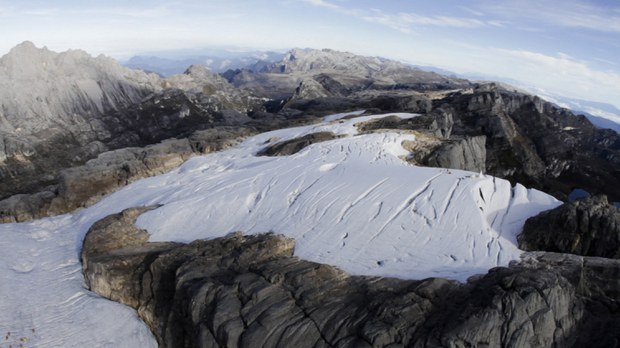This year’s El Niño phenomenon could hasten the disappearance in Indonesia of one of the world’s last remaining tropical glaciers, causing it to be extinct by 2026, the country’s meteorological agency warned on Wednesday.
The glacier on the peak of Puncak Jaya, a mountain in the Papua region, was already melting rapidly due to global warming, the agency’s chief said.
By December 2022, it had shrunk to a thickness of 6 meters (20 feet), from 8 meters (26 feet) a year before and 22 meters (72 feet) in 2016.
“The disappearance of the ice cap on Puncak Jaya will have a huge impact on various aspects of life in the region,” Dwikorita Karnawati, director of the National Meteorology, Climatology and Geophysics Agency (BMKG), said in a statement.
“The ecosystem around the permanent ice cap is vulnerable and threatened. Climate change also affects the lives of local indigenous people who have long depended on the environmental balance and natural resources in the region,” she said.
Climate change, which causes global warming, has brought about a rapid loss of the glacier’s ice, she said. The El Niño phenomenon, which occurs periodically, tends to bring warmer and drier conditions to Indonesia, reducing rainfall and increasing evaporation. In turn, this further shrinks the ice cap.
“The glacier might vanish before 2026, or even faster, and El Niño could accelerate the melting process,” said Donaldi Sukma Permana, a climatologist with the meteorology agency, according to the Reuters news service.
The meteorological agency said that the strongest El Niño on record, in 2015 and 2016, accelerated the glacier’s decline by up to 16 feet a year.

At 4,884 meters (16,024 feet) high, Puncak Jaya, also known as Carstensz Pyramid, is the tallest mountain in Indonesia, and part of a range that stretches across Papua, a region that shares a border with Papua New Guinea.
The glacier was first documented by European explorers in the early 20th century and has since attracted many scientists, researchers, and nature lovers who marveled at its existence in a tropical country.
But over the decades, the glacier shrunk due to global warming.
In 2010, a team of scientists from Ohio State University and the Indonesian agency drilled ice cores from the glacier and found evidence of its long history, estimating it had existed for at least 5,000 years.
They also found proof of its sensitivity to climate change.
Global warming not only increased the temperature, it also changed the altitude at which rain turned to snow, as an article on the university’s news website explained. So, rain was now falling at altitudes where it used to snow and replenish the ice on the glacier.
“If you want to kill a glacier, just put water on it,” said Lonnie Thompson, Ohio State University professor, to Ohio State News in 2019.
“The water basically becomes like a hot water drill. It goes right through the ice to the bedrock,” said Thomas, who was a senior author of a study on the glacier published in the National Academy of Sciences.
The 2010 Ohio State team also found traces of pollutants such as lead and sulfur in the ice cores, indicating human influence on the environment.
The glacier is located near a large copper and gold mine operated by PT Freeport Indonesia, a subsidiary of an American company that has been accused of causing environmental damage and human rights violations in Papua.
Donaldi, with the Indonesian meteorological agency, said the ice on the Puncak Jaya glacier had thinned by about 2.5 meters per year from 2016 to 2022.
He said that the ice cover was about 0.23 sq km last year and was continuing to melt.
“Another real impact of the melting ice on the mountain is its contribution to the global sea level rise,” which Donaldi said could affect millions of people in low-lying coastal areas.
The melting ice would change the flora and fauna on the mountain, said Rizaldy Boer, a climate risk management expert at the Bogor Agricultural University.
“Some species could go extinct. The latest one, since the ice melting has worsened in the last 10 years, has been a type of frog that has disappeared there,” he told BenarNews.
As for the floods in the low-lying areas, he did not see a quick fix.
“There is nothing we can do. We have to review the use of fossil energy sources and optimize renewable energy,” Rizaldy said.
The glacier’s end would also be a cultural loss, Ohio State University’s Thompson noted, saying the indigenous people who lived around the mountain worshiped it.
“The ridges and the valleys are the arms and legs of their god, and the glacier is the head,” he said.







